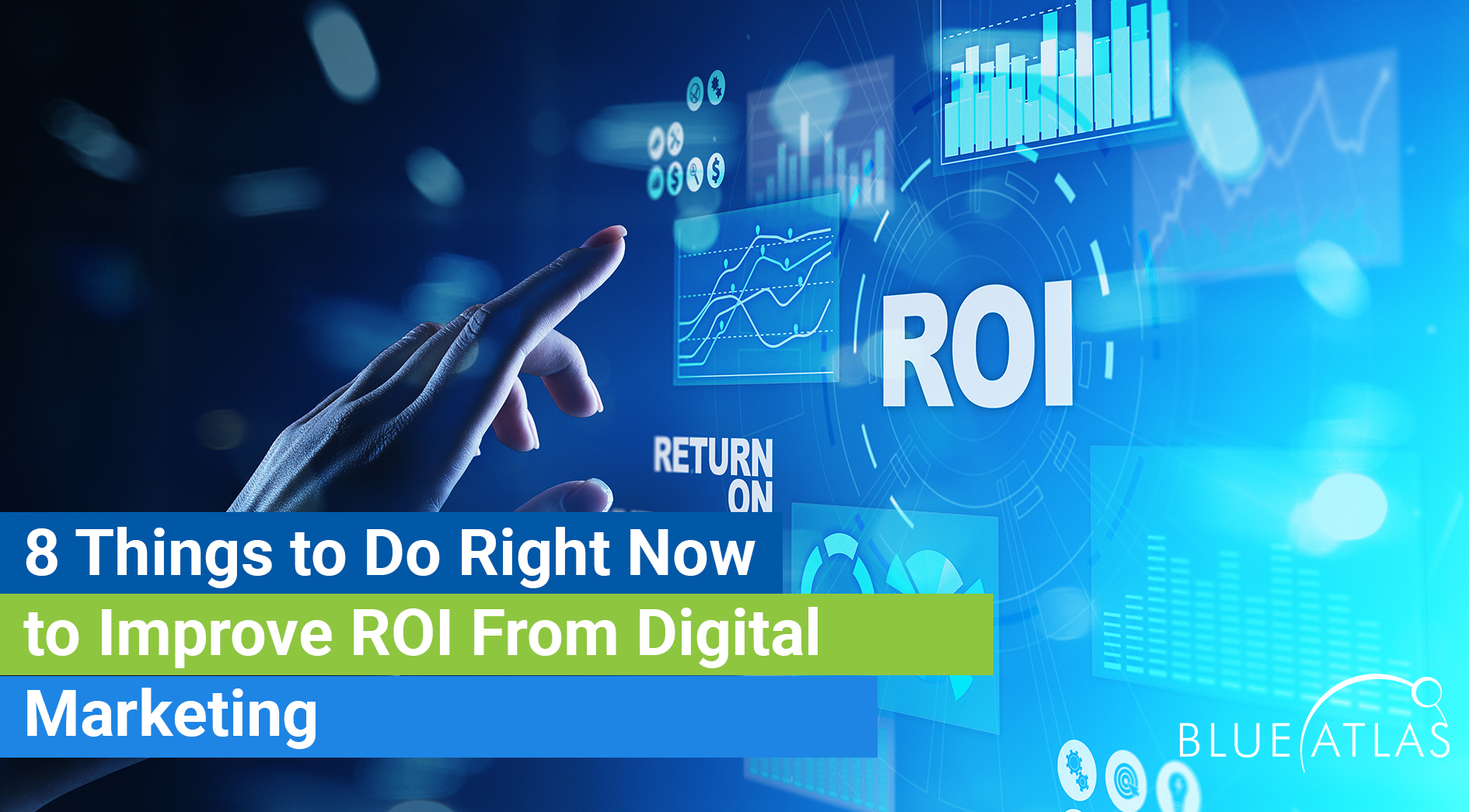ROI is one of the easiest indicators to run for marketing efforts, making it a handy go-to when measuring results: Simply divide net profit (derived from sales minus investment) by total investment (the current budget) and multiply by 100 to get a percentage.
But here’s where the challenge creeps in: If ROI isn’t what you’d like to see compared to your current budget and goals, what needs to change? What approaches will help link dollars spent to dollars gained more reliably, especially on the digital front? Let’s break down some of the best corrections you can make.
1. Study Your Traffic, and Study it Again
Poor ROI is often a result of poor marketing accuracy – when brands aren’t focusing on the right channels and methods of bringing in leads. The answers tend to lie in web traffic, and this is the best time to dive into careful analysis of all web traffic from all sources – and how that may compare to the traffic that your competitors are getting. Look at what traffic comes from ads, what comes from organic, what’s being directed by social media, and more. Check your bounce rates, time spent on webpages, and other signs of how your traffic behaves once they reach your site.
With all this information in hand, you are in an excellent position to find what efforts aren’t drawing as much traffic as they should, and where dollars may be best spent. This step feeds into everything we mention below, so it’s one of the best places to start!
2. Streamline Your Sales Funnel
Web traffic analysis may show that there’s a certain point in your sales funnel where traffic – and leads – rapidly decrease. These weak points indicate a problem that may be causing your ROI difficulties. That could be a UI or mobile optimization issue, a problem with product pages, an issue with checkout procedures, or much more. Experienced marketing agencies like Blue Atlas can help you locate these chokepoints and fix them so that more leads wind up completing sales.
3. Refocus Your Target Audiences
Another issue analysis can show is that the target audiences are a little too loose or not defined, which leads to marketing exposure for a lot of people who just don’t have much interest in buying. This is a good time to pull back and do a deeper study of repeat buyers to understand how they behave, and how to define them. Building buyer personas can reveal many useful changes to make in how and when marketing is applied.
4. Aim for User Intent
User intent remains the name of the game for creating content heading into 2021 (and beyond). This refers to creating content that’s directed at what potential leads want to know, instead of getting too bogged down in the exact phrases or words they may be using – something that Google has been encouraging for years. If your brand’s SEO work isn’t working toward user intent, it may not be as effective (or valuable) as it needs to be to pull in more leads.
5. Re-examine Your Key Indicators
Key indicators, like some of those we mentioned when talking about web traffic, can make for useful goals in digital marketing…as long as they are chosen well. Poor ROI numbers can be a sign that a brand has picked the wrong indicators to focus on, which aren’t really contributing to sales. For example, a campaign may be excellent at generating comments on social media, but if getting more comments is the primary focus, it won’t help as much at converting leads to sales. Always play for the endgame!
6. Survey Your Customers and Visitors
Is your business still struggling to locate where weak points may be? Try asking! Set up some online surveys for your past customers and website visitors. Taken in aggregate, answers to surveys can point in important directions for growth or correction.
7. Automate More Leads and Content
Sometimes, leads can fall through the cracks because there are too many of them, or they aren’t being managed correctly. Efficient marketing automation can help organize leads, schedule them for specific outreach, and let a brand know when it’s time to hand them off to sales. All this, and automation software can also be quite affordable – let us know if you would like help in implementing a solution like this.
8. Retarget Ads and Ad Platforms
Ads tend to be a major allocation point for digital marketing budgets, but also complex. Spending money on the wrong kinds of ads, in the wrong kinds of places, targeted at the wrong sort of behaviors, can quickly sink ROI. It’s smart to think about where you are using ads and how much traffic they are pulling: There could be lots of room for improvement, including rethinking where your ads should be placed for maximum effect.
Conclusion
One of the most common pieces of advice with ROI is, “Remember the intangibles.” It’s hard to quantify social media numbers or brand authority by only looking at sales. However, the intangibles should always lead to very real results! The tips we mentioned will help connect brand presence to sales more reliably: For deeper analysis or personalized advice, contact Blue Atlas and we can set up a meeting today.





